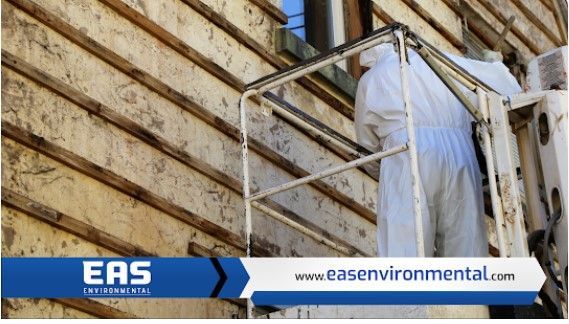
Abatement of lead refers to the work done to lessen the presence of lead and other hazards in a building. Children and pregnant women are especially vulnerable to the long-term health effects of lead exposure. Lead abatement services have many positive outcomes, including better health, lower healthcare costs, higher home values, and higher quality of life. This article will discuss the many positive outcomes that have resulted from lead removal initiatives.
I. Introduction
Lead poisoning can have devastating effects on children and adults, but abatement services aim to lessen these dangers. The goal of these initiatives is to reduce, manage, and ultimately eradicate lead hazards in residential and commercial structures. Saving money on repairs and long-term healthcare costs, lead abatement is a win-win for everyone involved. It protects children and other vulnerable populations from exposure to lead-based paint and other contaminants in the environment. This article will discuss why lead abatement services are important and what benefits they bring to communities.
A. Definition of Lead Abatement
The term "abatement" refers to the process of removing and controlling lead-based contaminants from the environment so that it is safe for human habitation. Lead abatement can include things like getting rid of lead-based paint, dust, and other materials, installing lead shielding or barriers, testing and monitoring air, soil, and water quality, removing and disposing of lead-contaminated materials, rehabilitating contaminated areas, and installing better ventilation systems.
The goal of lead abatement services is to lessen people's vulnerability to the health effects of prolonged exposure to lead in the environment. By raising public consciousness, providing educational opportunities, and instituting effective regulation, these initiatives aim to forestall the introduction of new contaminants and the spread of existing ones. The primary goal is to guarantee that no one in the building or on the premises will be harmed by prolonged exposure to harmful levels of these contaminants. These services also feature helpful advice on how to perform a risk assessment of one's own home or building for potential sources and implement preventative measures.
B. Overview of Benefits
Services aimed at reducing exposure to lead are good for people's health in general. These services can lessen the likelihood of life-threatening health issues from lead poisoning by reducing or eliminating exposure to lead contamination. Permanent damage caused by lead-based paint or other contaminants can be expensive to address, so they also aid in keeping repair costs to a minimum. They also aid in preserving property values and making neighborhoods more desirable places to buy or rent by reducing crime and making them safer places to live.
services aimed at reducing lead exposure can have a positive impact on environmental factors such as air and water quality on a broader scale. This aids in preventing widespread harm that could result from improperly handled toxins like lead. Finally, lead abatement services provide a chance for local governments to take the initiative to reduce environmental risks and show they care about citizens' well-being.
II. Health Benefits
There are many ways in which lead removal can improve people's health. Lead poisoning is a sneaky but deadly threat to children's health that can cause long-term issues and stunt their mental and physical growth. The exposure to toxic lead can be eliminated or greatly reduced by cleaning up the environment of lead-based contaminants. This lessens the likelihood of experiencing acute health problems like abdominal pain, nausea, vomiting, headaches, and/or neurological damage and also helps prevent the long-term health problems that can result from lead exposure.
Improved air quality is just one additional benefit of lead abatement services, which aim to reduce exposure risks associated with toxic levels of lead in the environment. Asthma and other respiratory illnesses can be mitigated as a result. In addition, by removing potential risk factors related to environmental contamination, these services can help to create healthier living environments for everyone in an affected area.
A. Reduced Risk of Childhood Lead Poisoning
There are many ways in which lead removal can improve people's health. Lead poisoning is a sneaky but deadly threat to children's health that can cause long-term issues and stunt their mental and physical growth. The exposure to toxic lead can be eliminated or greatly reduced by cleaning up the environment of lead-based contaminants. This lessens the likelihood of experiencing acute health problems like abdominal pain, nausea, vomiting, headaches, and/or neurological damage and also helps prevent the long-term health problems that can result from lead exposure.
Improved air quality is just one additional benefit of lead abatement services, which aim to reduce exposure risks associated with toxic levels of lead in the environment. Asthma and other respiratory illnesses can be mitigated as a result. In addition, by removing potential risk factors related to environmental contamination, these services can help to create healthier living environments for everyone in an affected area.
B. Improved Well-Being For Residents and Workers
The health of people in a lead-contaminated area can be improved through abatement efforts. Toxic lead can be reduced or eliminated if contaminants containing lead are removed from the environment. That way, they won't have to worry about the long-term effects of lead poisoning and can ease the symptoms they're experiencing right now, like stomach aches, dizziness, and headaches.
Lead abatement services not only make buildings and areas safer for those who live or work there, but they also improve health and well-being. Improved air quality brought about by these mitigation efforts has been linked in studies to a greater sense of well-being among those who live in lead-free environments. Thereby, lead abatement services can aid in boosting worker and resident morale, which is good for everyone's health.
III. Financial Benefits
Residents and businesses in lead-affected areas may reap several monetary benefits from abatement services. A property's value can rise as a result of remediation efforts, providing owners with a financial return on their investment due to the asset's enhanced condition. Prices in areas where there is no lead paint or dust may rise because of the increased demand from buyers.
Healthcare costs can be lowered in a region where lead abatement measures have been implemented. People can avoid costly treatments and extended hospital stays for lead poisoning if harmful substances are removed from the environment. Those who live or work in an affected area may see a significant reduction in their medical expenses as a result of this.
A. Cost Savings From Reduced Hazardous Waste Disposal Fees
Costs associated with disposing of hazardous waste can be cut by lead abatement services, benefiting both homeowners and businesses. Hazardous waste generated by lead abatement processes is safely collected and disposed of. In this way, you can avoid the high cost of transporting hazardous materials to a designated site.
In addition, businesses may save money on repairs or replacements of buildings that have suffered extensive structural damage due to prolonged lead contamination. Businesses can save money on property maintenance costs by implementing lead abatement services. Financial savings can be expected as well from the prevention or reduction of lead poisoning's adverse health effects.
B. Increased Property Value Due to Remediation Work
There are numerous ways in which lead abatement work can raise a home's market value. Once the lead is removed, the property's condition and safety will have improved, making it more appealing to potential buyers. In addition, lead abatement services implemented by businesses may increase the value of their properties compared to those that continue to have lead contamination problems.
Remediation work can also help people who are already living or working in a lead-contaminated environment. If they decide to sell, they can ask for a higher price thanks to the property's enhanced desirability as a result of the renovations. The repair costs associated with severe lead contamination can be reduced through lead abatement processes, helping affected owners save money.
Conclusion
Finally, lead abatement services benefit commercial and residential clients by decreasing the cost of hazardous waste disposal and raising the value of their properties. These services not only help property owners save money by reducing maintenance costs and increasing the property's resale value, but they also protect residents from the health risks associated with lead poisoning. In the grand scheme of things, lead abatement is a great way to ensure that places don't get too dangerous or unhealthy for those who live there.
FAQs about Lead Abatement
What are the main benefits of lead abatement services?
Lead abatement services have many financial and environmental benefits, including lower disposal costs for hazardous waste, better health, higher property values, and fewer maintenance costs.
How can lead abatement services help affected owners?
Lessening the frequency of costly repairs related to lead contamination is one of the many financial benefits of lead abatement processes for impacted property owners. Furthermore, the enhancements will make the property more desirable, which could lead to a higher selling price if they decide to sell.
Why is it important to implement lead abatement services?
Lead abatement services must be put into action to ensure the public's health and safety. Reducing lead contamination will protect people from potential health problems brought on by prolonged exposure to toxic substances. In addition, maintaining compliance with local government regulations is facilitated by sticking to these practices.
Contact EAS Environmental Today!
EAS Environmental will do everything we can to ensure your experience with us is excellent.
Request A FREE Estimate
Request a Free Estimate Form
Checkout Recent Post




Got a Question? We’re Here to Help.
You can arrange an appointment or make an enquiry by phone or email, orget in touch to us via our contact form.

